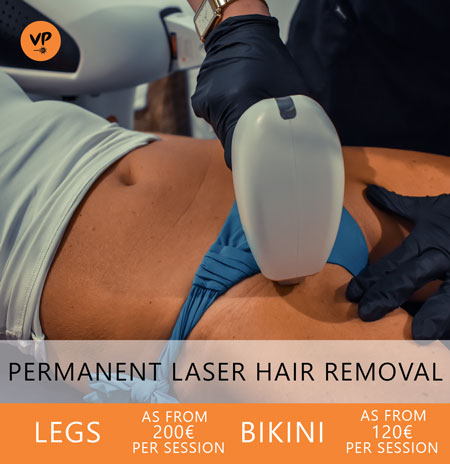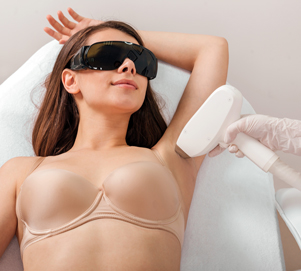What is the difference between laser hair removal and IPL hair removal? What are the advantages and disadvantages of these hair removal methods?Read More
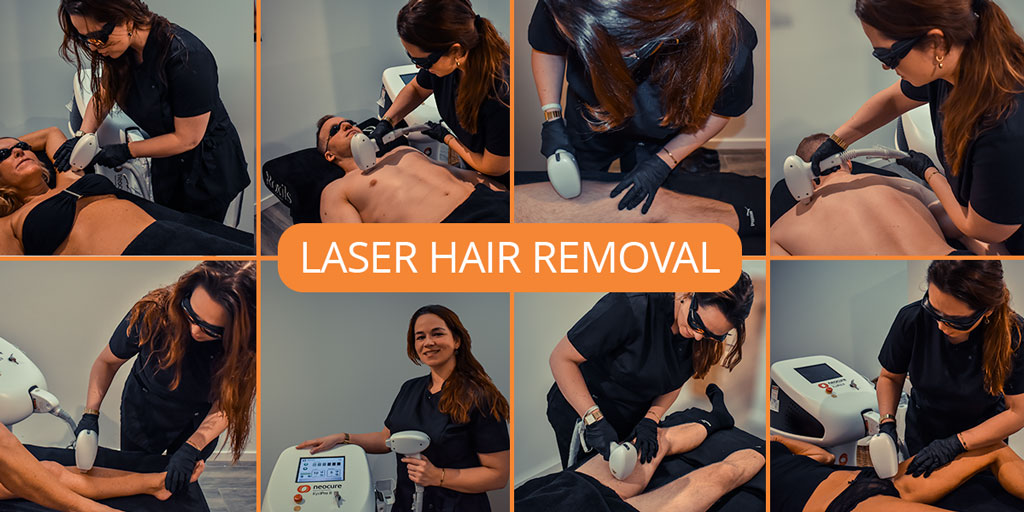
How does laser hair removal work?
Here's an overview of the hows and whys of (laser) hair removal.
Laser hair removal involves the use of the body's own melanin and a laser. A laser is actually light with a certain wavelength. A high wavelength is effective against wrinkles or scars, while a low wavelength can help with varicose veins. An even lower wavelength affects your hair. This light beam is emitted on the skin for only a fraction of a second, and the energy of the light beam is absorbed by the melanin (this is the pigment) present around the unwanted hair: the pigment is heated and acts as a heat conductor to penetrate to the hair root. The heat scorches the root, thus preventing hair from growing out.
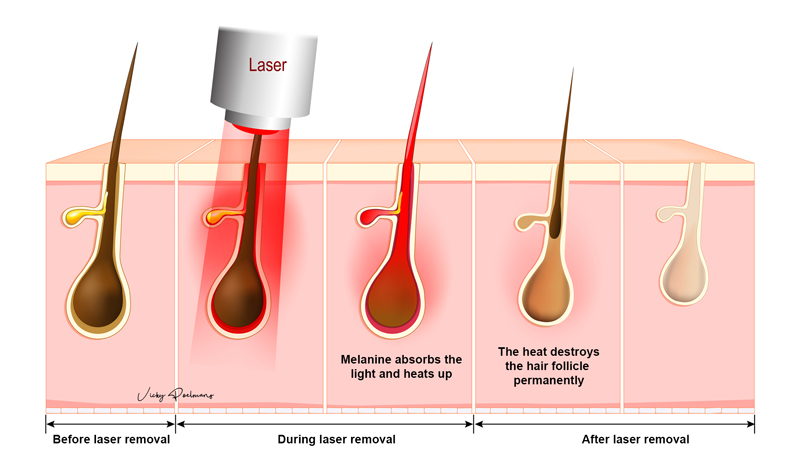
The term "Permanent" is relative. 100% permanent hair removal is unfortunately not possible. However, with the right laser, permanent results can be achieved. You will never be 100% permanent hair free because hairs can always become active later. However, you can count on 80%-90% hair loss. And the hairs that occasionally return will be many times lighter.
The need to have pigment (melanin) as a heat conductor also explains why multiple treatments are needed to remove all the hairs.
After all, melanin is only present in sufficient quantity in the growth phase of the hair (the anagen phase).
- The anagen phase is the active growth phase of the hair follicles. During this period, the cells in the hair root divide rapidly so that the hair grows and expands into the hair shaft.
- After the anagen phase, the follicle enters the catagen phase, when the hair stops growing. This phase lasts only two to three weeks.
- The final phase is the telogenic phase, which consists of resting and falling out. Once the hair begins to fall out, the follicle is urged to begin a new cycle. The duration of this phase is about 100 days for healthy follicles on the scalp, but other parts of the body can vary significantly.
Since only 15 percent of hair follicles are in the anagen phase at any given time, and this is the most effective phase for laser hair removal, it is important to have your laser hair removal treatments every four to six weeks to ensure that all hair follicles are treated during your treatment series.
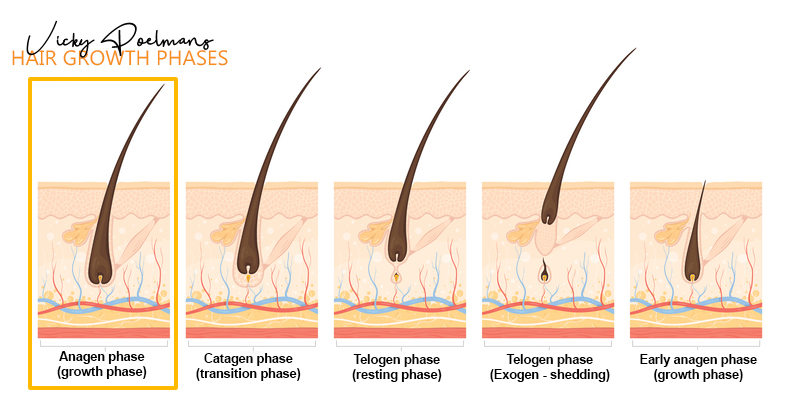
Remember that the number and time between treatments may vary from person to person depending on your skin and hair type, so it is recommended to always follow the advice of your trained laser expert.
This can also be traced back to the lack of pigment (melanin) as a heat conductor. If the hairs are blond or simply too light in color, conduction cannot take place. This is because there is then no color (pigment) to conduct the energy. In some cases it can be tried if there is still a little melanin (i.e. pigment) in the hair. Lasering away thin downy hairs is also not an option. So in general, the darker and thicker the hair is and the lighter the skin is, the better the result of laser hair removal will be.
Yes, there are definitely circumstances where laser hair removal is not recommended:
- Sunbathing & tanning beds
- Pregnancy & breastfeeding
- Blond hair, white hair and red hair
- Herpes and treatments with photosensitizing medications (specific antibiotics, Roaccutane ...)
- Skin infections, diseases and skin lesions
- Places with tattoos or piercings are avoided
Laser hair removal is completely safe, provided it is performed properly by someone professionally trained. Normal skin reactions that may occur after laser treatment are: redness, swelling and warmth. These skin reactions are short-lived and often much less irritating than shaving or waxing.
Below is a summary of the main differences between shaving, waxing, electrolysis and laser hair removal:
| Typ hair removal | Maintenance | Pain experience | Hours/year | Cost 10 years | Cost 20 years |
|---|---|---|---|---|---|
| Laser | 5-8 sessions |
Low-Medium | 3 hours total |
€ 400-2.500 | |
| Elektrolysis | 15-40 sessions |
High | 6 hours total |
€ 900-2.500 | |
| Schaving | Weekly/daily | Low | 39 | € 2.200 | € 4.300 |
| Waxing | Monthly | High | 8 | € 3.000 | € 6.000 |
| Laser used | Wavelength (nm) | Light source | Type of skin |
|---|---|---|---|
| Argon | 488 nm or 514.5 nm | Turquoise/Cyan or Green | No longer used |
| Ruby | 694.3 nm | Deep Red | Pale |
| Alexandrite | 755 nm | Near-infrared | All skin types |
| Gepulseerde diode-array | 810 nm | Near-infrared | Pale to medium |
| Nd:YAG | 1064 nm | Infrared | Dark |
| IPL | 650 nm | Intense pulsed light | Pale to medium |
A extensive 2006 research published in Lasers in Medical Science compared the effectiveness after 6 months on hair removal from diode lasers, alexandrite lasers and IPL:
| Laser used | Effectiveness after 6 months |
|---|---|
| Pulsed diode laser | 71,71% |
| Alexandrite | 68,75% |
| IPL | 66,96% |
A meta analysis of multiple studies on laser hair removal compared the effectiveness after 3 sessions on hair removal of diode lasers, alexandrite lasers, Nd:YAG and ruby lasers:
| Laser used | Effectiveness after 3 sessions |
|---|---|
| Pulsed diode laser | 57.5% |
| Alexandrite | 54.7% |
| Ruby | 52.8% |
| Nd:YAG | 42.3% |
Shave the zone 2 days
before your laser session
No sun, tanning bed or selftanner
4 weeks before your laser session
No waxing or hair removal with tweezers
6 weeks before your laser session
Do not apply products on the treated zone
during 24 hours
No sun or tanning bed
up to 4 weeks after your laser session
No waxing or hair removal with tweezers
Only shaving is allowed
The history of laser hair removal
Below is a brief overview of the history with regard to (laser) hair removal.
Laser hair removal is the latest advancement of a beauty practice that has continued to evolve over the years as technology has advanced.
Prehistoric times
Cavemen removed hair from their heads and faces to prevent mites and other insects from forming nests and laying eggs in their hair. It is thought that in the Stone Age, shaving was also a safety measure during battle because a hair-free head and face protected them from an opponent grabbing onto them. In harsh weather conditions, shaving was also used to prevent frostbite as water got trapped and froze against the skin. They scraped off their hair with a sharpened stone or a sea shell. Talk about painful hair removal methods!
Ancient Egypt

Ancient Egyptians removed unwanted hair with early versions of beeswax and sugar-based waxes, tweezers made from seashells and pumice stones. In ancient Egypt, body hair, especially pubic hair, was a symbol of the uncivilized, portrayed as dirty and unsanitary, hence many women opted for hair removal. They also followed the trend of Cleopatra, who removed all her body hair, including from the top of her head, as a sign of social class. Even men preferred a clean-shaven face, as having a beard or stubble was common among servants and slaves.
Ancient Rome

During the Roman Empire, men and women used razors made of flint to remove excess hair. Ancient Rome also associated hair removal with status: someone with smooth skin was associated with purity and superiority. Body hair removal was done by both men and women. However, the practice of body hair removal for women and men began to diverge, as keeping the pubic area bare became a symbol of purity and class for women, while men grew their body hair as a sign of masculinity. This inequality between men and women continued throughout the centuries.
1960

's : first laser
The prototype "ruby" laser, invented by Theodore H Maiman in 1960, consisted of a silver-coated ruby wand - it was revolutionary but unreliable. The continuous laser beam not only burned and damaged the skin, but was slow and labor intensive because only a few follicles were treated at a time. Due to frequent burning of surrounding tissue, the device was eventually recalled. Safety improvements were made, but changing the heat intensity meant that follicles were not efficiently destroyed and grew back.
1962
Diode laser
After theoretical treatises by M. G. Bernard, G. Duraffourg and William P. Dumke in the early 1960s, coherent light emission from a laser diode was demonstrated in 1962 by two American groups led by Robert N. Hall at General Electric's research center and by Marshall Nathan at the IBM T. J. Watson Research Center. There is ongoing debate as to whether IBM or GE invented the first laser diode. Priority is given to the General Electric group that obtained and submitted its results earlier.
1964
ND:YAG laser
The Nd:YAG laser was invented by J.E. Geusic at Bell Laboratories in 1964.
1970's
's : Alexandrite Laser
The next laser development came in the 1970s when the Alexandrite laser was invented. Radiation was forced through an alexandrite crystal, reducing hair growth. Although these lasers were much safer, they did not provide enough heat to destroy the hair follicle. As a result, it would have taken years to achieve permanent results.
1983
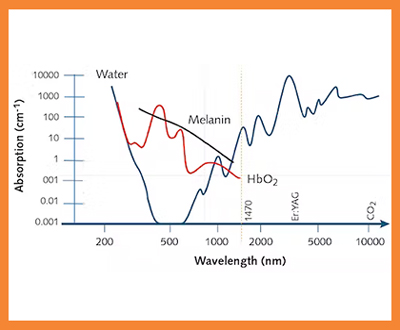
The theory of selective photothermolysis
The theory of selective photothermolysis developed by Richard Rox Anderson and Parrish in 1983 was based on a laser with a particular wavelength and pulse duration of light to target a particular chromophore. By applying this theory, the target (a selective type of tissue) could be selectively destroyed, sparing the surrounding tissue. (Anderson RR, Parrish JA. Selective photothermolysis: precise microsurgery by selective absorption of pulsed radiation. Science. 1983 Apr 29. 220(4596):524-7.). This theory would prove to be the basis of laser hair removal.
1990's
's : Laser hair removal
Richard Rox Anderson worked at Harvard Medical School and had recently hired a new physician for his team, Dr. Melanie Grossman. Grossman suggested they investigate laser hair removal, referring to previous research on lasers and ineffective results. Anderson and Grossman began tests on furry dogs, and in 1994 they published their first paper on laser hair removal on human subjects. Anderson was the first of their human trials, in keeping with his golden rule: "Do unto yourself before you do unto others." Anderson's specific laser hair removal technique would lay the foundation for modern laser hair removal as we know it today. Although the process was generally similar to earlier studies decades earlier, Anderson and Grossman had perfected the duration and intensity of the laser applied to the skin. Due to Anderson and Grossman's success with laser hair removal technology, the method was later approved by the FDA in 1997. Anderson would go on to invent and develop many more laser treatments, including those for removing tattoos, pigmented lesions, birthmarks and more.

Interview with Richard Rox Anderson
'Inventor' of Laser Hair Removal

What hair removal methods are available? And most importantly, what are the advantages and disadvantages of these hair removal methods?Read More
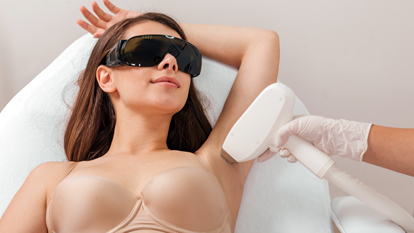
What is the best time to start or schedule your laser hair removal? Can it be done in the summer and are there any drawbacks?Read More

Which celebrities have had laser hair removal performed to get rid of unwanted hair growth? We looked it up for you!Celebs & Laser


